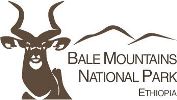Protected area planning
A General Management Plan for BMNP was first developed in 1986 (Hillman 1986), providing a summary of the knowledge and problems and issues facing BMNP at that time. A new GMP planning process was started under the DGIS-WWF Bale Harenna Project, and although a draft plan was compiled by a group of local technical experts, this was neither sufficiently participatory, nor detailed and was never completed. The Conservation and Sustainable Use of Medicinal Plants Project (CSMPP, Institute of Biodiversity Conservation) commissioned a “Review of Studies made on BMNP”, that has provided the core of the background Information for planning. A new initiative, driven by OARDB in partnership with FZS and the CSMPP, to compile this GMP, commenced in December 2005 with a GMP Stakeholder Planning Workshop. This workshop identified the park’s purpose and exceptional resource values. It also identified, prioritised and grouped the main problems and issues facing BMNP and its management. The stakeholders at this workshop then agreed the planning process to be adopted and appointed the Core Planning Team (CPT) chaired by OARDB, comprised of BMNP management and the concerned federal, regional and partner projects.
Core Planning Team
- Oromia Agriculture and Rural Development Bureau (Chair)
- Bale Mountains National Park
- Wildlife Conservation Department (MoARD)
- Conservation and Sustainable Use of Medicinal Plants Project (Institute of Biodiversity Conservation)
- Frankfurt Zoological Society-Bale Mountains Conservation Project
- Bale Eco-Region Sustainable Management Programme (Farm Africa/SOS Sahel)
The CPT was tasked with directing the planning process, making key decisions on the process adopted, planning the GMP structure, and guiding the participation of other stakeholders. After ratification of this process by OARDB, the CPT appointed the Technical Working Groups and a planning facilitator to develop each of the five management programmes with the help of a facilitator. The outputs of the working groups were review numerous stakeholders (see below) the CPT and OARDB before being presented to the full GMP planning team at BMNP GMP Stakeholders Presentation Workshop in December 2006. A task force on zonation and resettlement met in January 2007 and their resolutions were incorporated into the GMP. Finally the CPT reviewed the GMP in light of comments from the stakeholder workshop, task force and other stakeholders in March 2007, before submission to the Oromia Government for ratification.
The planning process involved a variety of participatory approaches to encourage a broad range of stakeholders to engage in the GMP planning process, feel ownership over the framework and strategies developed, and, ultimately, to commit to GMP implementation. A stakeholder analysis was carried out at an initial workshop as a preliminary framework for determining the planning process’s initial participation strategy and this was later refined by the CPT and working groups. Throughout the planning process, stakeholders were given the opportunity to discuss, debate, and eventually agree on the issues and problems faced by BMNP and solutions to these issues as outlined in the GMP. Consultations also took place through key informant interviews in communities in and around BMNP through stakeholder planning workshops and direct discussions with individuals in private companies, NGOs, Government at all levels, researchers and tourists.
